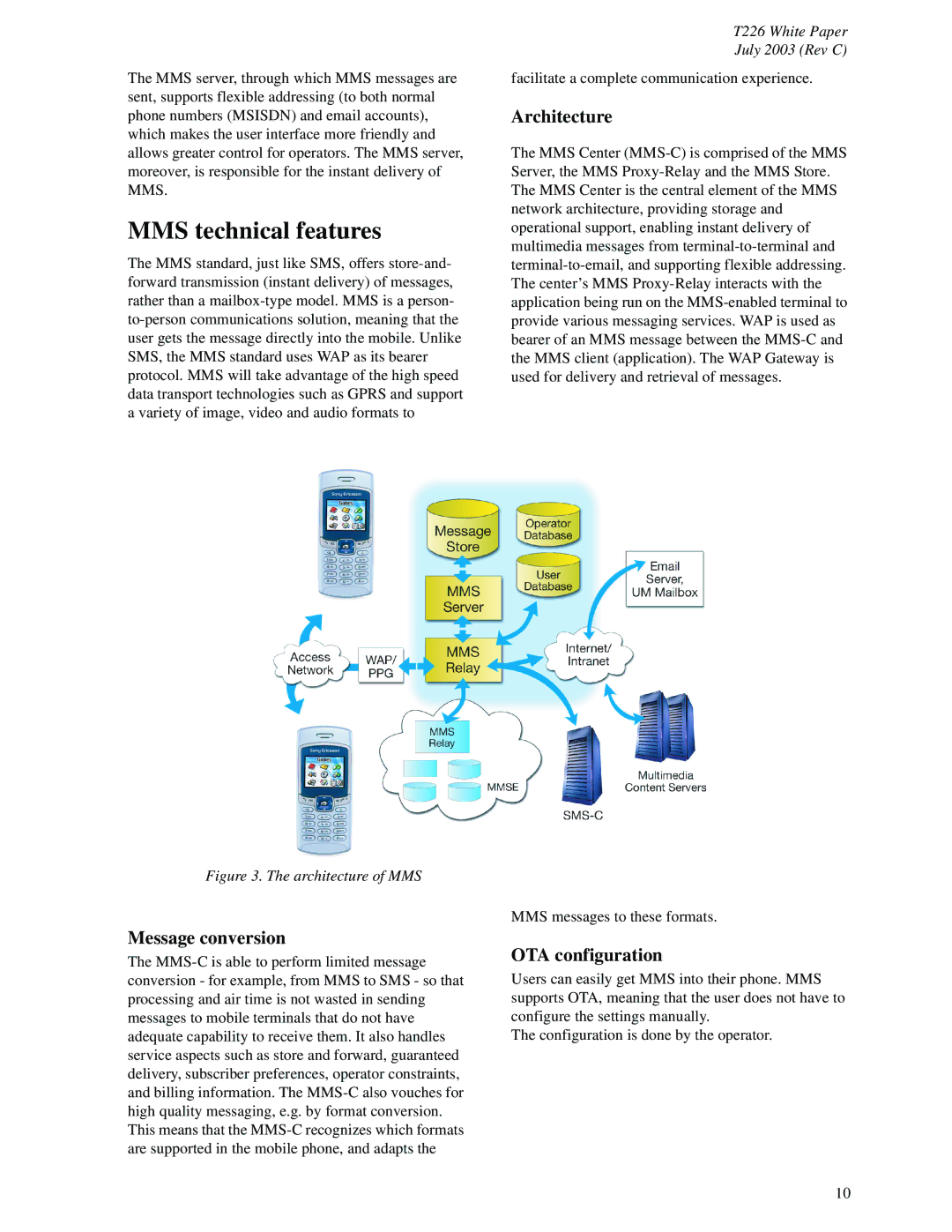T226 specifications
The Sony Ericsson T226 was a compact and stylish mobile phone introduced in the early 2000s, showcasing the innovative spirit of the collaboration between Sony and Ericsson. Renowned for its user-friendly design and functional capabilities, the T226 made a lasting impression in the market, appealing to a wide audience seeking an efficient communication tool.One of the defining features of the Sony Ericsson T226 was its sleek and lightweight form factor. Weighing just 80 grams and measuring 100 x 44 x 19 mm, this phone was incredibly portable, making it easy to carry and navigate. Its vibrant, 256-color display offered a resolution of 128 x 160 pixels, allowing for clear visibility of text and graphics, which was quite impressive for its time.
The T226 was equipped with essential features such as SMS and MMS messaging, enabling users to send text and multimedia messages. This was a key aspect of mobile communication during the early 2000s, and the T226 catered to this demand. Additionally, it supported polyphonic ringtones, offering users the ability to personalize their mobile experience with customized sounds.
For connectivity, the Sony Ericsson T226 featured GPRS support, facilitating data transfer for web browsing and email access. While web capabilities were limited compared to modern standards, the inclusion of GPRS was a significant advancement for mobile technology of that era. The phone also provided a basic suite of entertainment options, including a selection of pre-installed games, which added to its appeal for younger users.
In terms of battery life, the T226 was powered by a standard lithium-ion battery, providing up to 400 hours of standby time and around 9 hours of talk time. This longevity made it a reliable choice for those who needed consistent communication throughout the day.
The design of the T226 was enhanced by its colorful exterior options, which included vibrant hues appealing to a youthful market. This device not only fulfilled the need for communication but also served as a fashion accessory, reflecting the user's personality.
In conclusion, the Sony Ericsson T226 was a noteworthy mobile phone that combined style, functionality, and user-friendly features. Its compact design, messaging capabilities, and battery efficiency made it a popular choice during the era of early mobile communications. As one of the many successful products from the Sony Ericsson partnership, the T226 remains a nostalgic representation of early mobile technology.

